Annual Harvest, Seacliff
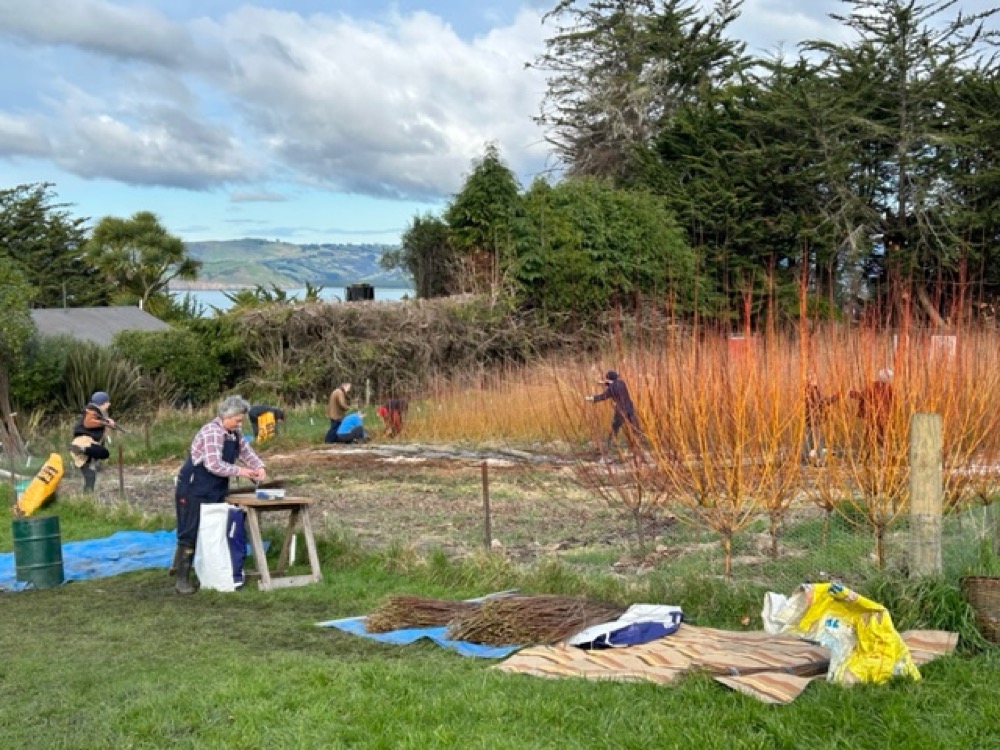
Harvest humming along by the second weekend.
Bronwyn Lowe • July 23, 2023
We got the annual willow harvest done over three weekends in July, with some truly lovely willow harvested even though the beds are only two years old. The first day of harvest on 8th of July focussed on improving our harvest methods and systems. With so many different varieties, it’s important to make sure they don’t get mixed up as they get cut, sorted, sized and tied into bundles. A key improvement was adding a preliminary sorting step where branched, broken, bent or damaged willow rods were put into a separate 'seconds' pile. Seconds were further separated into potentially useful rods, for example for making frames, using as base sticks, or making garden structures. The rest was cut up for kindling. Meanwhile, the good willow was sorted into size classes for bundling.
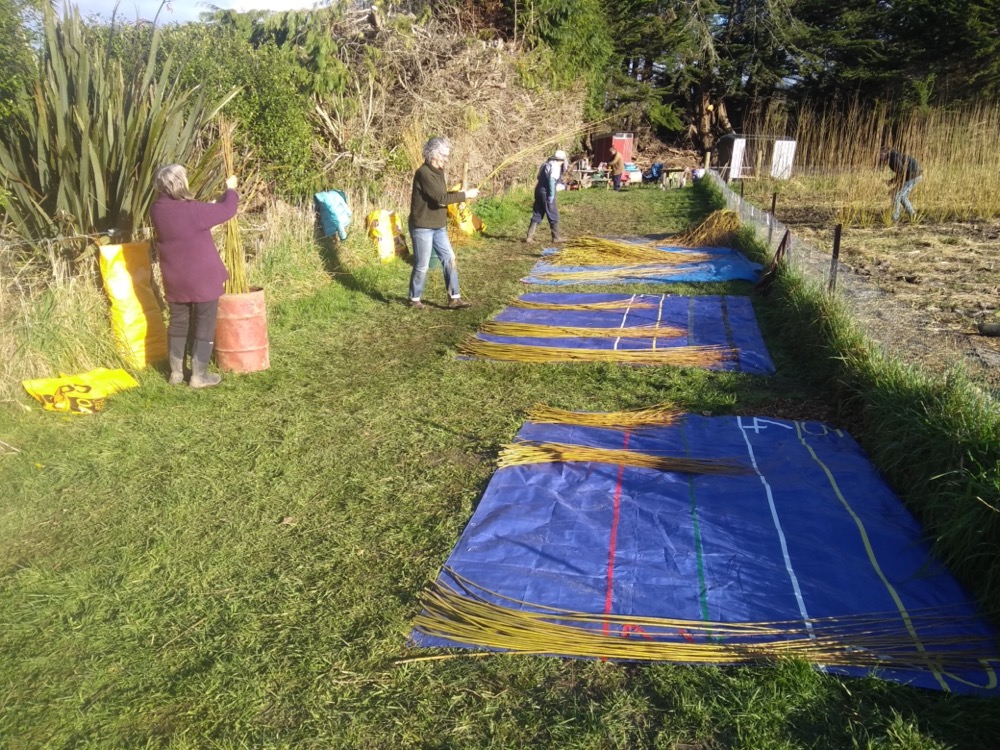
Sorting onto tarps
It gets quite muddy in the sorting areas with all the foot traffic, so we sort the willow onto tarps. A great innovation this year was marking lines on the tarps for the various height classes, much easier to sort the willow into consistent size classes! Although there was some debate whether to use traditional 'foot' sizes, or to go metric – we settled on foot sizes for ease of writing the numbers on all the labels.
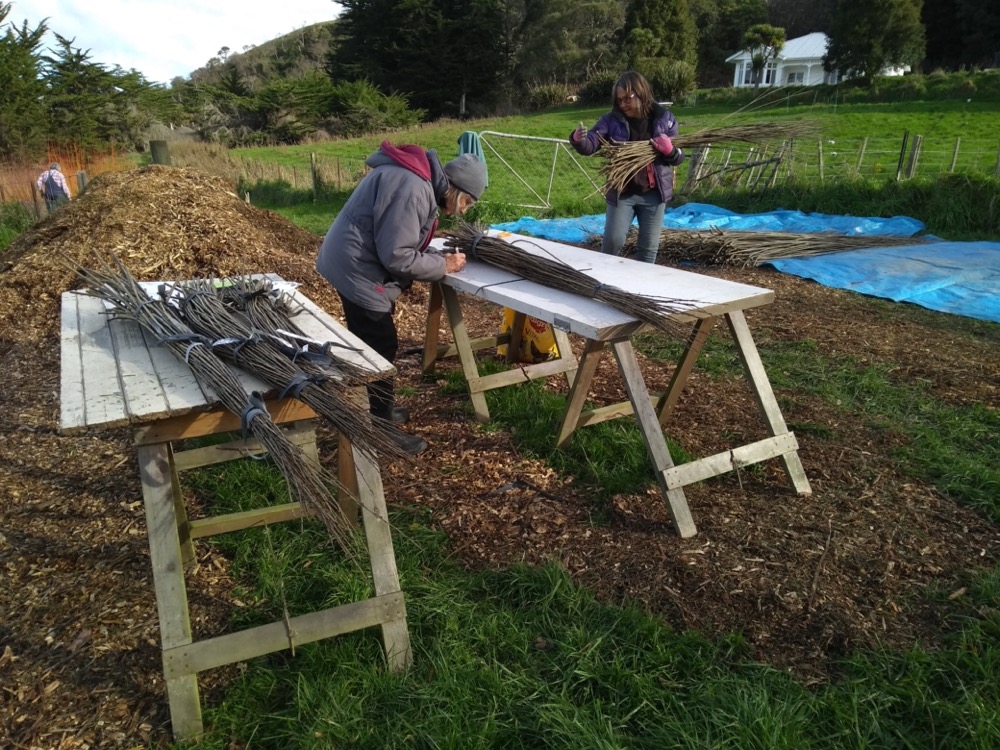
Bundling and labelling
This year we’re trying out using recycled bicycle tubes for tying the willow bundles, an idea Maia picked up from the team at Rekindle in Christchurch. A few bicycle shops around Dunedin were happy to give us bags of discarded bicycle tubes. We cut the tubes into smaller strips for tying. We certainly need a LOT of ties.
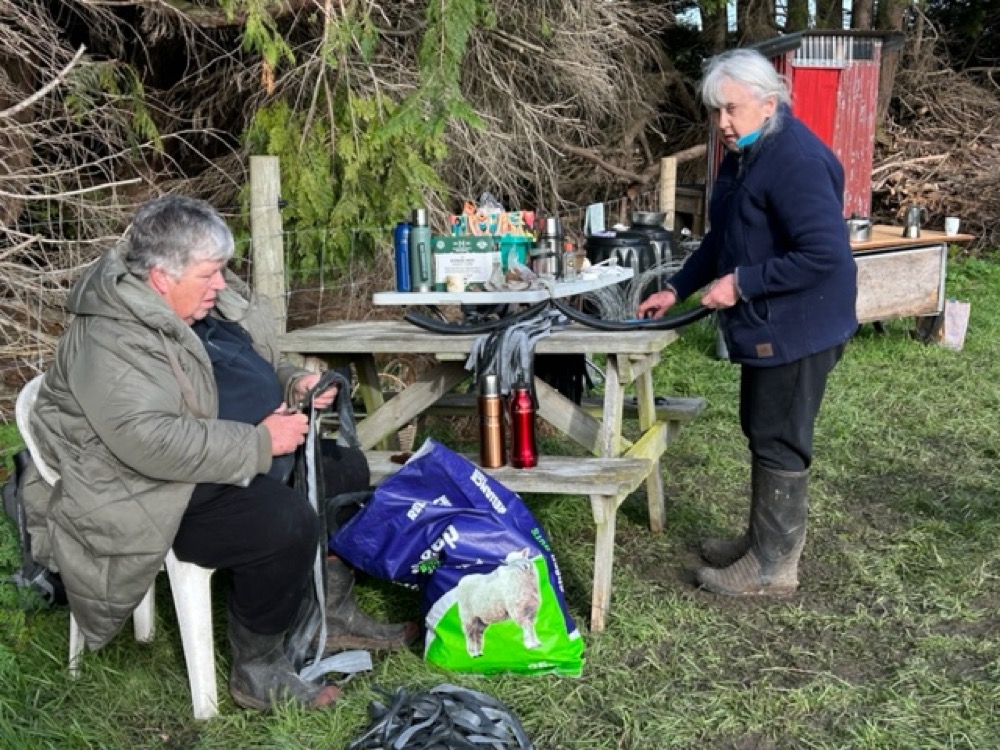
Cutting bike tubes
Once again, a big thankyou to our neighbour Amanda for making a large shed available for storing the harvested willow bundles. The shed is just down the road, so we pile all the bundled willow into Belinda’s ute at the end of each harvest day and drive it down there.
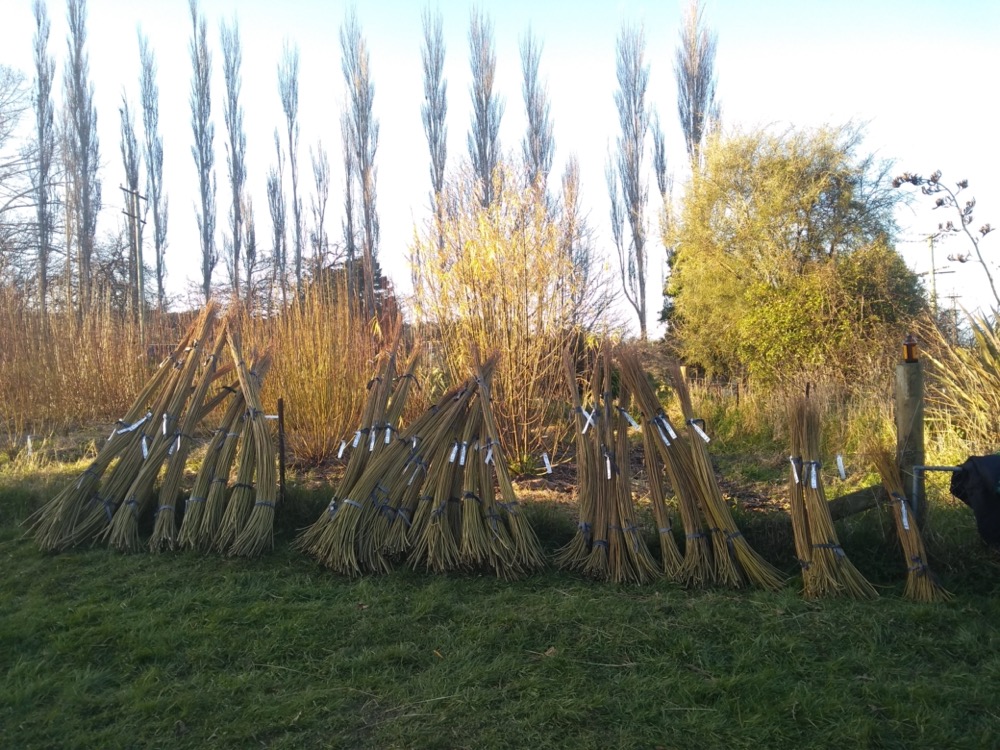
Green Dicks bundles
We drafted up a "Harvest Protocol" while we were going, documenting all the key steps and equipment. This will be very useful to refer to when we’re setting up for harvest next year and teaching people the various tasks it takes to bring in a good harvest. There’s a lot of willow to harvest now at the Seacliff beds, and it’s great to have a system sorted that makes the whole process efficient, improves the skills of our harvesters and hopefully keeps harvest a fun event!
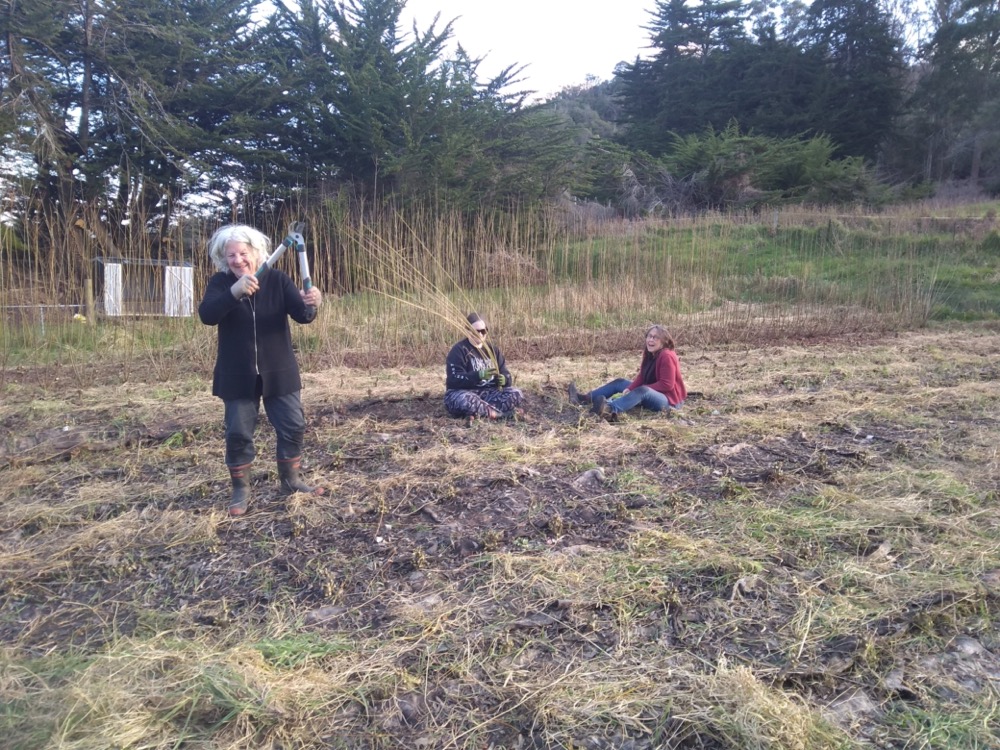
Last stool cut
And finally, so good to have the Tool Shed on site - thankyou Waikouaiti Coast Community Board for funding this very useful shed. Very quick to pack up and put away all the harvest gear at the end of each day– tarps, sorting tables, bags of ties, tools, lunch gear, washing up gear etc etc. Between the Tool Shed and our documented Harvest Protocol, harvest next year should go like a dream!
Now we’re all looking forward to a whole year of weaving projects – we’re currently drafting up a calendar of events and will be publishing it on this website soon, so keep an eye out!